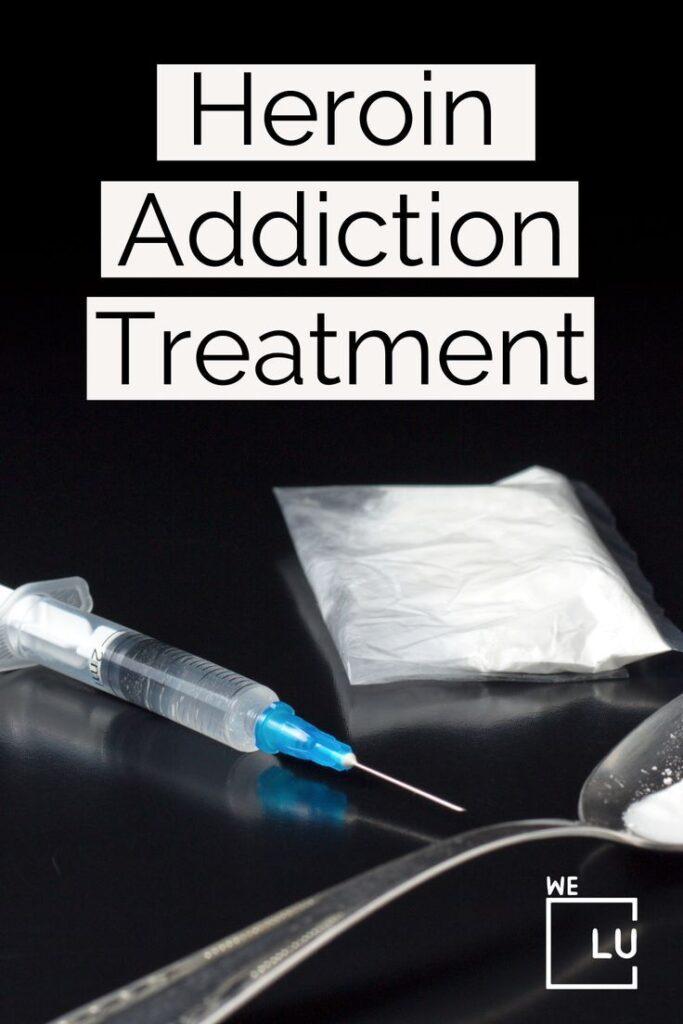What Is Heroin? Heroin Drug Facts. Black Tar Heroin Addiction. What Does Heroin Look Like? Heroin Addiction Treatment.
Heroin, also known as diacetylmorphine, is derived from the opium poppy plant. Heroin currently has no FDA-approved indications for use. It is a Schedule I drug under the Controlled Substances Act, with no approved medical use in the United States. With the high rate of prescription opioid addiction and the lower cost of heroin, many individuals turned to the cheaper option and developed heroin dependence. Continue to read more about heroin drug.
By We Level Up | Editor Yamilla Francese | Clinically Reviewed By Lauren Barry, LMFT, MCAP, QS, Director of Quality Assurance | Editorial Policy | Research Policy | Last Updated: July 7, 2023
What Is Heroin Drug?
What is heroin made of? Heroin is an opioid drug produced from the substance morphine, which naturally occurs in the seed pods of different types of opium plants. This plant is the starting point for creating multiple narcotic substances, including morphine, opium, codeine, and heroin.
Heroin is a lethal, commonly abused, illegal drug in the US. It has become an epidemic drug problem that claims thousands of lives every year, and it’s only getting worse, as many people use heroin as a last resort to feed their prescription painkiller addiction.
In the past few years, nearly 80% of individuals attributed their heroin use to prescription opioid use. Thus, prescription opioid use is one of the most significant risk factors for heroin use. Some common heroin street names are dope, smack, horse, and junk.
What does a heroin high feel like? It elicits feelings of pleasure that people get addicted to. However, the adverse effects of use and abuse are too severe and harmful to ignore. Heroin addiction is the inability to stop using heroin despite suffering a range of negative consequences from using the drug. Sadly, this compulsion to use heroin leads to chaos in life, financial and social problems, physical and psychological dangers, and other consequences. Faster-acting than morphine and highly addictive, heroin can result in physical dependence after a single use for some people. As the drug wears off, the user immediately feels uncomfortable with heroin drug withdrawal symptoms that typically lead to subsequent use.
Side Effects Of Heroin Use
What are the effects of heroin? The effects of heroin are very similar for every type of it. Powder heroin is off-white and purer. Making powdered heroin involves refining heroin that has been processed to remove impurities. Black tar heroin is cheaper than other types of heroin because of its simple manufacturing process and purity levels. Most black tar heroin is estimated only to be 30-40% pure.
Heroin side effects occur shortly after the use and persist for a few hours. It has the following effects on the user:
What does heroin feel like? Heroin quickly enters the brain, disrupting the reception of communication signals, particularly in the areas of the brain associated with pain, pleasure, heart rate, breathing, and sleeping. Long-term use of heroin can cause permanent changes in brain function. How long does heroin high last? The effects of heroin take place shortly after the use and tend to persist for a few hours.
How does heroin make you feel? Heroin users claim to experience a “rush” (a surge of pleasure or euphoria). However, there are more general effects, such as:
- Dry mouth.
- Heated skin flushing.
- Heaviness in the arms and legs.
- Intense itching and nausea.
- Confused mental function.
- “On the nod,” a fluctuating state of consciousness and semiconsciousness.
Long-term heroin users may experience the following side effects:
- Inability to sleep.
- Dilated veins among drug users.
- For those who sniff or snort it, it might cause damaged tissue within the nose.
- Heart valves and lining infection.
- Abscesses (swollen tissue packed with pus).
- Abdominal pain and diarrhea.
- Liver and kidney condition.
- Pneumonia among the lung conditions.
- Sadness and antisocial personality disorder are examples of mental illnesses.
- Male sexual dysfunction.
- Irregular women’s menstrual cycles.
How To Identify Heroin Symptoms?
How to tell if someone is on heroin? If you suspect that a friend or family member may be using heroin. Individuals who are addicted to heroin are likely to show some or even all of the following Heroin addict signs:
- Patterns of alertness follow fatigue.
- Shallow or strained breathing.
- Injection wounds, heroin track marks, needle marks.
- Infections on the skin from injections boil.
- Nausea.
- Vomiting.
- Small, constricted pupils.
- The appearance of “distant” gazing eyes (some say heroin steals the soul, and it’s called “heroin eyes.”).
- Lack of motivation.
- Disorientation or poor motor function.
- Placing distance from friends and family members or hanging out with a new group of people.
- Communication flaws, difficulty speaking, slurring speech.
- Lack of memory, forgetting things, or not remembering events or matters.
- Unexplained weight loss.
- Constipation.
- Long, floppy, heavy extremities.
- Itching.
In addition, to the many signs and symptoms of heroin use listed above, there can also be behavioral changes, such as neglected responsibilities, social isolation, poor hygiene, and disinterest in the hobbies and activities the user once enjoyed.

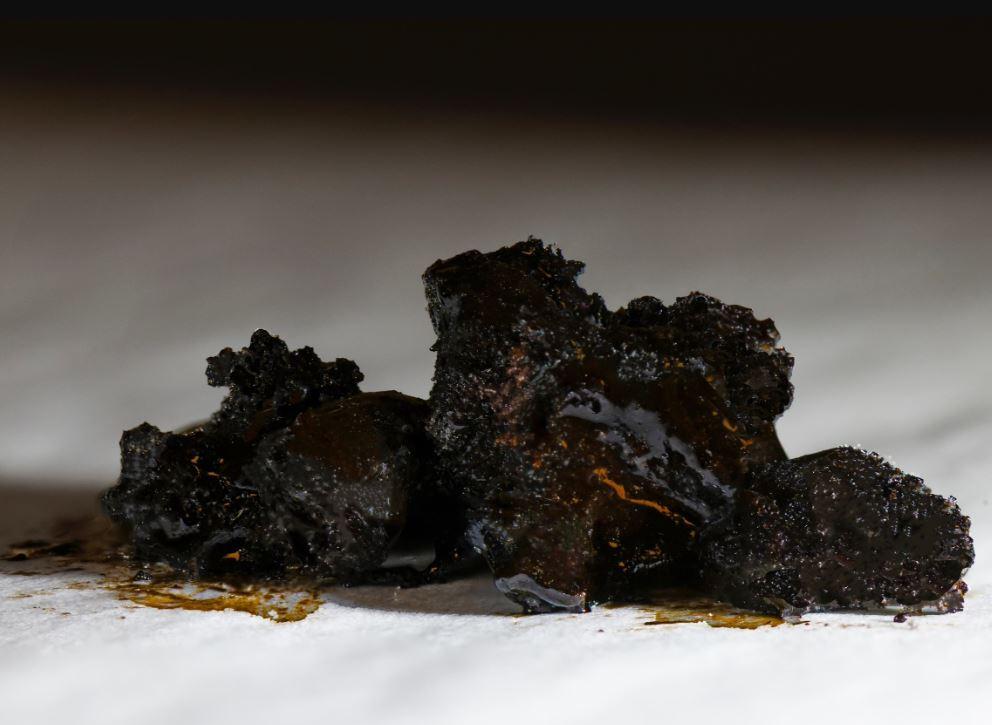
How Is Heroin Taken?
How to take heroin? First, you must understand that all forms of heroin carry significant health risks, including addiction, overdose, and various physical and mental health complications.
How is heroin used? Heroin can be taken through various routes of administration. The most common methods include:
- Heroin Injection: Heroin is dissolved in water and injected directly into the veins using a syringe. Injecting heroin delivers the drug rapidly into the bloodstream, resulting in an immediate and intense high.
- Smoking: Can you smoke heroin? And how is heroin smoked? Heroin can be heated on foil or a similar surface, and the vapors are inhaled through a tube or straw. Smoking heroin produces a quick onset of effects but is less potent than injecting.
- Snorting Heroin: Heroin is ground into a powder and snorted through the nose. The drug is absorbed through the nasal mucosa and enters the bloodstream, but the effects may be less intense than injection or smoking.
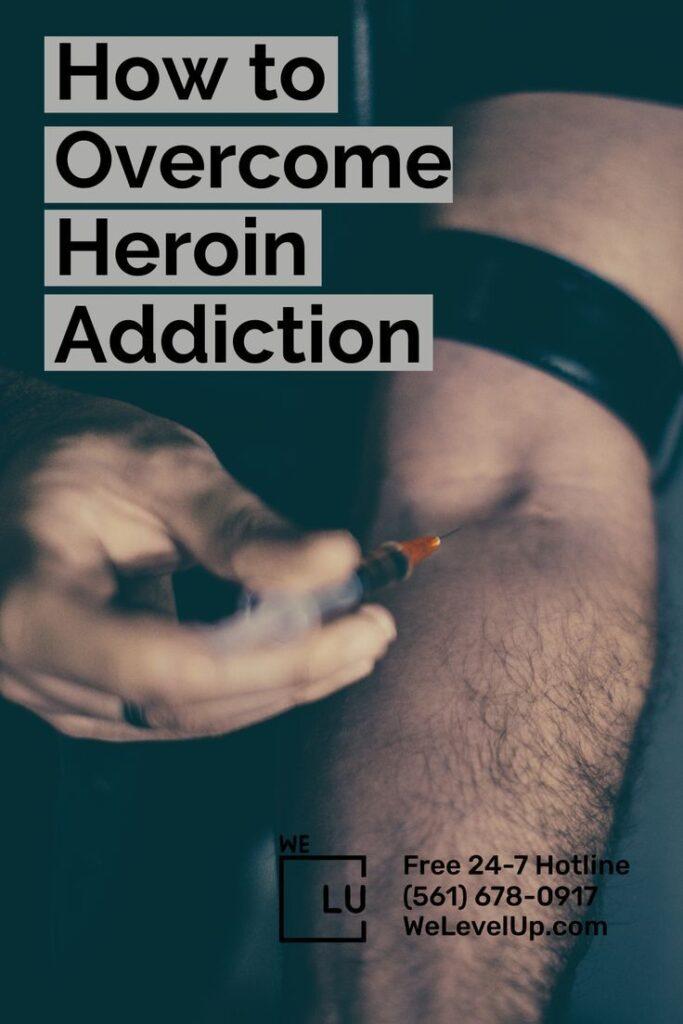
Skip To:
Learn More:
- Heroin Detox Timeline, Withdrawal Symptoms, Care & Treatment
- What Does Heroin Smell Like?
- How Long Does It Take To Withdraw From Heroin?
- Heroin Withdrawal Symptoms, Timeline, & Effective Detox
- How Long Does a Heroin High Last?
- Side Effects Of Heroin, Withdrawal Symptoms, & Treatment
- What Does a Heroin Addict Look Like?
- 6 Signs of a Functioning Heroin Addict
- Can You Snort Heroin? Snorting Heroin Side Effects, Dangers & What Happens If You Snort Heroin?
- The Signs & Risks Of Smoking Black Tar Heroin
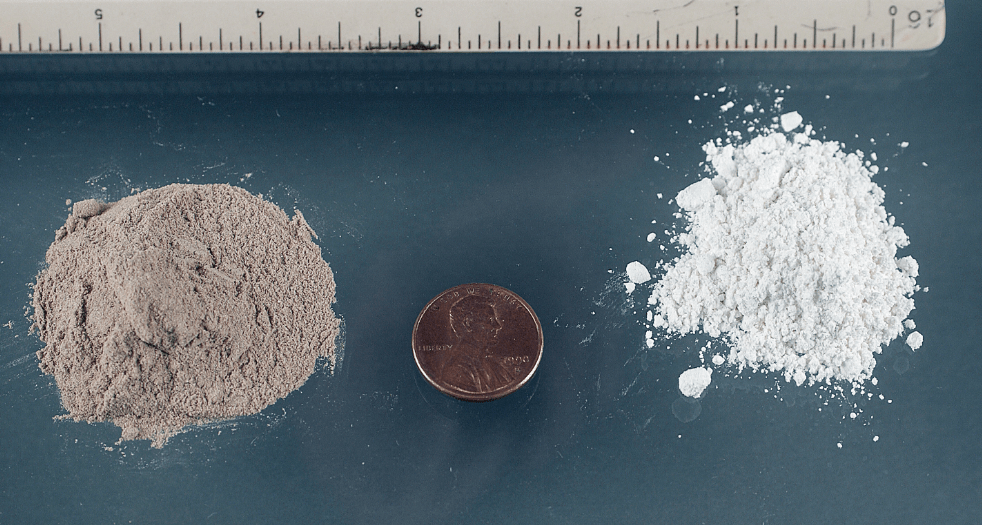
The Link Between Prescription Opioids And Heroin Drug Abuse
Is heroin legal? No. One of the concerning aspects of prescription opioid abuse is the potential transition to heroin abuse. As individuals develop a tolerance to prescription opioids or face barriers to obtaining them legally, they may seek alternative substances to satisfy their cravings. How much is a brick of heroin? Heroin, an illegal opioid drug, often becomes a substitute due to its accessibility and lower cost than prescription opioids.
The similarities in the effects of both substances fuel the connection between prescription opioid and heroin abuse. What does heroin do? The effects of prescription opioid pain relievers like OxyContin and Vicodin are comparable to those of heroin.
How does heroin affect the brain? Both prescription opioids and heroin interact with the brain’s opioid receptors, leading to pain relief, euphoria, and sedation. As individuals transition from prescription opioids to heroin, they are exposed to increased risks, including overdose and other health complications. Furthermore, the use of heroin, which is often adulterated and of uncertain potency, poses additional dangers to users.
Heroin Drug Injection, HIV, And Hepatitis
Addressing the root causes of drug addiction, such as through comprehensive substance abuse treatment and support services, is vital for reducing the risk of heroin injection and associated health complications. Heroin drug injection increases the risk of HIV and hepatitis infections.
What does heroin do to the body? Here’s some information about heroin effect on the body and the connection between heroin injection and these viral infections:
- HIV transmission: HIV (Human Immunodeficiency Virus) can be transmitted by sharing contaminated heroin needles and other drug paraphernalia. When individuals inject heroin using needles previously used by someone infected with HIV, there is a risk of transmitting the virus. Moreover, risky sexual behaviors in the context of drug use can also contribute to the spread of HIV.
- Hepatitis transmission: Hepatitis refers to the inflammation of the liver, and there are several types, including hepatitis B (HBV) and hepatitis C (HCV). Like HIV, hepatitis viruses can be transmitted by sharing needles and drug paraphernalia. Hepatitis B can also be transmitted through sexual contact and other means of blood-to-blood contact.
- Injection-related risks: Heroin injection involves using needles, syringes, and other equipment that may not be adequately sterilized. Sharing needles and other injection equipment can lead to the transmission of bloodborne infections. In addition, injection practices that involve using unclean water or reusing and sharing drug preparation equipment increase the risk of infection.
- Co-infection: Individuals who inject heroin and become infected with HIV or hepatitis B or C may experience co-infection, meaning they are infected with multiple viruses simultaneously. Co-infection can have severe health implications, as it may lead to more rapid disease progression and increased risk of complications.
- Harm reduction strategies: To address the risks associated with heroin injection and the transmission of HIV and hepatitis, harm reduction strategies are crucial. These strategies aim to minimize the negative consequences of drug use without requiring abstinence.
- Examples of harm reduction approaches include:
- Needle and syringe exchange programs: These programs provide sterile needles and syringes to individuals who inject drugs, reducing the sharing of contaminated equipment.
- Safe injection sites: These supervised facilities allow individuals to inject drugs under the supervision of healthcare professionals who can provide sterile equipment and respond to potential overdoses.
- Education and counseling: Providing information on safe injection practices, the risks of HIV and hepatitis, and promoting safer sex practices can help individuals make informed decisions and reduce the spread of infections.
- Access to testing and treatment: Ensuring that individuals who inject drugs have access to HIV and hepatitis testing, as well as appropriate medical care and treatment if diagnosed, is crucial to reducing the impact of these infections.
- Examples of harm reduction approaches include:
Heroin Drug Classification Fact Sheet
Heroin Definition
Heroin is a highly addictive illegal opioid drug derived from morphine, extracted from certain poppy plants’ seed pods. How is heroin taken? It is typically sold as a white or brownish powder or as a sticky black substance known as “black tar heroin,” and it can be smoked, snorted, or injected. It is commonly misspelled as “heroine drugs.”
Heroin Schedule
What schedule drug is heroin? In the United States, heroin is classified as a Schedule I controlled substance under the Controlled Substances Act. This classification reflects its high potential for abuse, absence of accepted medical use, and lack of safety under medical supervision.
Heroin Street Names
Heroin is known by various street names, varying by region and community. Some common street names for heroin include “H,” “smack,” “junk,” “dope,” “brown sugar,” and “horse.” These names are often used as slang terms to refer to the drug in illicit drug markets and among individuals involved in drug use.
Meth VS Heroin
Methamphetamine (meth) and heroin are both highly addictive illegal drugs belonging to different substances. Methamphetamine is a stimulant that increases energy and alertness, while heroin is an opioid that produces feelings of euphoria and sedation.
Half Life Of Heroin
Heroin half life can vary based on several factors, including the individual’s metabolism, the drug’s purity, and the administration route. On average, the half-life of heroin ranges from 2 to 6 minutes when injected intravenously, meaning that half of the drug is eliminated from the body within that time frame.
Heroin Epidemic
Heroin became the drug of choice for many opioid users: The heroin epidemic significantly increases the abuse, addiction, and overdose deaths associated with heroin use. It became particularly pronounced in the United States in the late 2000s and early 2010s, with a surge in heroin-related fatalities and a rise in individuals transitioning from prescription opioid abuse to heroin.
Heroin Rehab
Heroin rehab programs typically provide a comprehensive approach to addressing addiction’s physical, psychological, and social aspects.
In heroin rehab, the initial step often involves a medically supervised detoxification process to safely manage withdrawal symptoms as the drug is eliminated from the body. This is followed by a range of evidence-based therapies, such as cognitive-behavioral therapy (CBT), individual counseling, group therapy, and family therapy, to address the underlying issues contributing to addiction and promote behavioral change.
For more information about heroin, download the free heroin drug fact sheet below. The DEA has made the file publicly available for download to help raising awareness about heroin use and abuse.

Get Your Life Back
Find Hope & Recovery. Get Safe Comfortable Detox, Addiction Rehab & Dual Diagnosis High-Quality Care.
Hotline(844) 597-1011Statistics & Facts About Heroin
Access to evidence-based treatment for heroin addiction, including medication-assisted treatment (MAT) with medications like methadone and buprenorphine, is crucial in supporting recovery. However, treatment gaps and barriers to access continue to be significant challenges in addressing heroin addiction effectively. How many people die from heroin? Take a look at the summarized statistics below about heroin.
80%
Roughly 80% of heroin users reported misusing prescription opioids before using heroin.
Source: CDC
14,000
In 2019, there were over 14,000 deaths involving heroin drugs, representing a substantial increase compared to previous years.
Source: NIDA
902,000
In 2020, 0.3%, or roughly 902,000 persons 12 or older, reported taking heroin in the previous 12 months.
Source: NSDUH
Heroin Effects On The Body
Heroin is one of the most addictive substances, and an addiction to this drug is hard to overcome without professional heroin addiction treatment. Heroin addiction is treatable. Although it is possible to recover from heroin addiction, it’s not easy.
Experience Unexplained Physical Changes
Since this drug often causes nausea and vomiting, many people using heroin lose their appetite. Because of this, most people who abuse this drug lose weight. Weight loss is often one of the first physical signs and symptoms of heroin addiction that family members notice. Moreover, many heroin users appear tired and look older than their actual age. They may have dark circles around their eyes and a pale complexion. Some might even have a bluish tint to their skin because of how heroin affects heart rate and blood pressure.
Other unexplained physical changes commonly linked with heroin include:
- Difficulty breathing.
- Slurred speech.
- Scabs and bruises.
- Constant runny nose.
- Heavy-feeling limbs.
Experience Excessive Itching And Skin Picking Disorder
Other common symptoms of heroin addiction are itching skin and skin-picking disorder. When used, heroin triggers the immune system to release histamine, a chemical typically released when someone has an allergic reaction. When released inside the body, histamine activates the skin’s itch receptors, which commands the brain to scratch an itch.
In addition, heroin can:
- Irritate nerve fibers in the body, making itching worse.
- Bind to specific receptors in the body that send itch signals to the brain.
- Lead to injection injuries that cause abscesses and skin infections that may itch as they attempt to heal.
Many heroin users pick their skin as well. Generally, the picking is a result of the intense itching heroin causes. However, the anxiety and restlessness associated with heroin withdrawal can also lead to skin picking.

Heart Attack
Chronic heroin injectors may develop collapsed veins and infection of the valves and heart linings. Other cardiovascular effects include heart failure, blood vessel damage, low blood pressure, collapsed veins, and heart attack. Heroin users were at higher risk for acute myocardial injury (the medical name for heart attack) after heroin inhalation and binge drinking. The cause might be a heroin-induced cardiotoxic effect or vasospasm compounded by binge drinking.
Lung Disease
Lung problems, including various types of pneumonia, may result from the poor health of the user as well as from heroin’s depressing effects on respiration. In addition to the effects of the drug itself, street heroin often contains toxic contaminants or additives that can clog blood vessels leading to the lungs, liver, kidneys, or brain, causing permanent damage to these vital organs.
Infections
Heroin can decrease and suppress T and B immune cells. It can lower someone’s ability to fight infections, viruses, and bacteria. How someone uses heroin and other forms of the drug can also put them at risk for disease.
Top 10 Heroin History FAQs
-
Who invented heroin?
When was heroin invented? Heroin was synthesized and first marketed by the pharmaceutical company Bayer in 1898. It was initially intended as a less addictive substitute for morphine but was later discovered to be highly addictive and outlawed in many countries.
-
Is heroin a stimulant?
No, heroin is not a stimulant. Is heroin a depressant? It is a depressant that acts on the central nervous system, slowing brain activity and producing a sedating and euphoric effect.
-
Where does heroin come from?
Heroin is derived from morphine, extracted from the opium poppy plant. Most of the world’s heroin supply comes from heroin opium poppy cultivation in Afghanistan, Southeast Asia, and South America.
-
What type of drug is heroin?
Heroin is a highly potent and illegal opioid drug. What schedule is heroin? It is classified as a Schedule I controlled substance, indicating a high potential for abuse, no accepted medical use, and a lack of accepted safety for use under medical supervision.
-
How to make heroin?
Creating or manufacturing heroin is illegal and highly hazardous. Producing heroin poses significant legal consequences and severe health risks, including the potential for overdose, addiction, and potentially fatal complications.
-
How much is heroin?
The price of heroin can vary widely based on location, purity, and availability. However, discussing or promoting the price of illegal substances is illegal and unethical. Is heroin illegal? Yes. And it is highly advised to avoid involvement with heroin or illegal drugs.
-
Is heroin a narcotic?
Yes, heroin is classified as a narcotic. It is a potent opioid drug that acts as a central nervous system depressant and has strong analgesic properties.
-
What is in heroin?
Heroin typically consists of the psychoactive compound diacetylmorphine derived from morphine. It is often mixed or adulterated with other substances, such as lactose, starch, powdered milk, or other powdery substances, to increase its bulk and street value.
-
Is morphine heroin?
Morphine and heroin are derived from the opium poppy heroin plant but are different substances. Heroin is synthesized from morphine and is more potent and rapidly acting than morphine.
-
How does heroin work?
What does heroin taste like? Heroin rapidly binds to opioid receptors in the brain and body, resulting in various effects. It produces a strong sense of euphoria, pain relief, and sedation by suppressing the central nervous system and altering neurotransmitters’ release in pain perception, reward, and pleasure.
Heroin Drug Test
Heroin drug tests detect the presence of heroin or its metabolites in a person’s system. Here are some critical details about heroin drug tests:
- Types of drug tests: Heroin can be detected through various drug testing methods, including urine, blood, saliva, and hair tests. Urine tests are the most commonly used method for detecting recent heroin use.
- Detection window: The detection window for heroin in drug tests depends on the specific type of test being used. Generally, heroin and its metabolites can be detected:
- In urine for 1-3 days after use.
- In blood and saliva tests, heroin can typically be seen for 6-12 hours.
- Hair tests have a longer detection window and can detect heroin use for several months or more, depending on the length of the hair sample collected.
- Testing accuracy: Drug tests for heroin have generally high accuracy rates when conducted by reputable laboratories. False positives are rare, but false negatives may occur if the drug is no longer present in detectable amounts or if the test is conducted outside the drug’s detection window.
- Purpose of testing: Heroin drug tests are used for various purposes, including employment screening, probation or parole monitoring, substance abuse treatment programs, and forensic investigations. They are also commonly used in healthcare settings to assess patients with suspected heroin use or monitor individuals undergoing addiction treatment.
- Other opioids detection: Some drug tests designed to detect heroin may also identify other opioids, including prescription opioids and synthetic opioids like fentanyl, as they share similar chemical structures.
How Much Does Heroin Cost?
The information provided here is for general knowledge only and should not be interpreted as a guide for purchasing or engaging in illegal drug activities.
How much is a gram of heroin? The weight or quantity typically measures the price of heroin and is commonly sold in small units, such as “bags” or “capsules.” Street prices can vary significantly, but on average, a single dose or bag of heroin can range from $5 to $20 or more.
The cost of heroin can vary across different regions and even within local markets. Supply and demand dynamics, law enforcement efforts, and drug availability can influence regional price variations.
Moreover, the purity of heroin can vary greatly, with higher purity levels generally associated with higher prices. Dealers may adulterate or cut heroin with other substances to increase profits, which can affect the drug’s quality and cost.
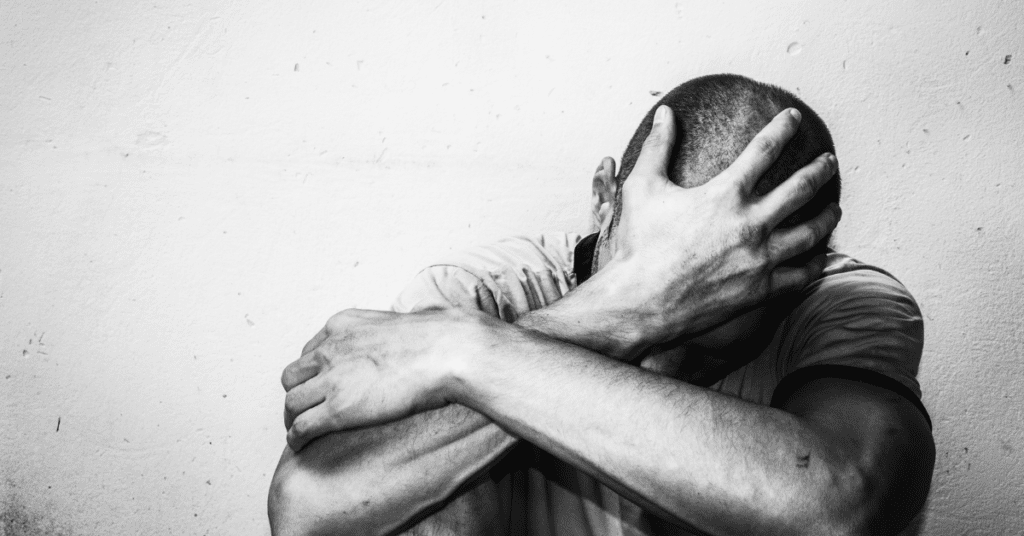
How Long Does Heroin Last?
It’s possible that you could use heroin without getting addicted. However, it’s also possible that you could become addicted quickly. You might spin into a downward spiral that results in losing everything that means anything to you. There is no safe amount of heroin. Since fentanyl is used as a cutting agent to increase drug dealers’ profit, it’s possible to try heroin for the first time, overdose, and die.
Heroin addiction is a chronic disease and should be treated like other chronic illnesses. Like those, it should constantly be managed and monitored. Heroin is an opioid, and opioid addiction treatment differs for each individual. The primary purpose of opioid addiction treatment is to help the person stop using the drug. Opioid addiction treatment can also help the person avoid using it again.
How Long Does Heroin Stay In System?
The detection window for heroin in the human body can vary. Here’s a general overview of the approximate timeframes for detecting heroin in different types of drug tests:
- Urine test: Heroin and its metabolites can typically be detected in urine for about 1-3 days after use. However, heavy or chronic users may extend the detection window to 4-7 days or longer. It’s worth noting that individual variations exist, and detection times can vary.
- Blood test: Heroin is quickly metabolized in the body, and its detection in the blood is relatively short-lived. In most cases, heroin can be detected in the blood for 6-12 hours after use. After that timeframe, the drug becomes less detectable in the bloodstream.
Remembering that the information provided is general and approximate, and detection times can vary from person to person. Moreover, hair tests have a much longer detection window. They can detect heroin use for a more extended period, potentially several months or even years, depending on the length of the hair sample collected. However, hair testing is less commonly used to detect immediate or recent drug use and is more helpful in assessing long-term drug use patterns.
How Long Does Heroin Stay In Urine?
Heroin and its metabolites can generally be detected in urine for approximately 1-3 days after use. However, individual factors can influence the detection window. Factors such as the frequency and amount of heroin use, the individual’s metabolism, and the sensitivity of the drug test being used can impact the duration of detectability.
For occasional or infrequent heroin users, the drug is typically detectable in urine for the lower end of the range, around 1-2 days. In heavy or chronic users or cases of high-dose heroin use, the detection window may extend to 3 or more days.
How Long Does Heroin Withdrawal Last?
Individual experiences of heroin drug withdrawal can differ, and the duration and severity of symptoms can vary. Seeking professional medical assistance and support during withdrawal is crucial to ensure safety and effectively manage symptoms.
Here’s a rough overview:
- Early withdrawal symptoms: Withdrawal symptoms typically begin within 6-12 hours after the last dose of heroin. During this initial stage, individuals may experience anxiety, restlessness, muscle aches, sweating, insomnia, and drug cravings. These symptoms usually peak within 1-3 days.
- Acute withdrawal phase: The acute withdrawal phase typically lasts about 5-7 days, although some symptoms may persist for longer. This phase is characterized by more intense symptoms, including nausea, vomiting, diarrhea, abdominal cramping, dilated pupils, rapid heartbeat, and changes in blood pressure. Psychological symptoms such as depression, irritability, and mood swings are also common during this phase.
- Post-acute withdrawal symptoms: Some individuals may experience post-acute withdrawal symptoms (PAWS) following the acute withdrawal phase. These symptoms can persist for weeks or months and vary in intensity. PAWS symptoms may include mood swings, fatigue, insomnia, anxiety, difficulty concentrating, and drug cravings.
Addiction is the compulsive use of substances, causing psychological and physical components. While it may take some time to become physically dependent on heroin, the user could experience psychological cravings after their first time using heroin. Regular and frequent users of heroin drug will experience symptoms of withdrawal when they attempt to cut down or quit their heroin use. While heroin withdrawal is typically not fatal, the symptoms may become so unbearable that the users will do anything to avoid it.
Get Help. Get Better. Get Your Life Back.
Searching for Accredited Drug and Alcohol Rehab Centers Near You?
Even if you have failed previously and relapsed, or are in the middle of a difficult crisis, we stand ready to support you. Our trusted behavioral health specialists will not give up on you. When you feel ready or just want someone to speak to about therapy alternatives to change your life call us. Even if we cannot assist you, we will lead you to wherever you can get support. There is no obligation. Call our hotline today.
(844) 597-1011The Dangers Of Heroin Overdose
Heroin drug overdose is possible. When people consume enough heroin to cause a life-threatening reaction or death, they have overdosed. Sadly, overdoses of heroin have surged recently. People who overdose on heroin frequently experience slowed or stopped respiration. This may result in hypoxia, a condition when there is a reduction in the amount of oxygen reaching the brain. Hypoxia can cause unconsciousness, permanent brain damage, and impacts on short- and long-term mental and neurological systems.
How Can A Heroin Drug Overdose Be Treated?
When administered quickly, the drug naloxone can treat an opioid overdose. It functions by rapidly attaching to opioid receptors and obstructing heroin’s and other opioid medications’ effects. It may take more than one dose to help someone start breathing again, so it’s crucial to get them to an emergency room or a doctor so they may get any more assistance they require.
There are nasal sprays and injectable (needle) solutions of naloxone available (NARCAN Nasal Spray and KLOXXADO). The nasal spray variants of naloxone can be used to revive an overdosing person by friends, family, and neighbors.
Public health initiatives to improve naloxone availability to at-risk individuals and their families, first responders, and other community members have increased due to the rising incidence of opioid overdose deaths. There are rules in some jurisdictions that permit pharmacists to give naloxone without a patient’s personal physician’s prescription.
Is Heroin Addictive?
Addiction is the most severe form of substance use disorder, ranging from mild to severe. If a heroin drug addict quickly stops using the substance, they could experience acute withdrawal. The following are examples of withdrawal symptoms, which can start as soon as a few hours after the last dose of the drug:
- Restlessness.
- Severe skeletal and muscular discomfort.
- Sleep issues.
- Constipation and vomiting.
- Shivering and goosebumps (“cold turkey”).
- Involuntary leg movements (“kicking the habit”).
- Severe opiate withdrawals.
The long-term effects of opioid addiction on the brain are a research topic. According to studies, heroin use is related to some white matter loss in the brain, which may impact one’s ability to make decisions, manage their behavior, and respond to stressful situations.
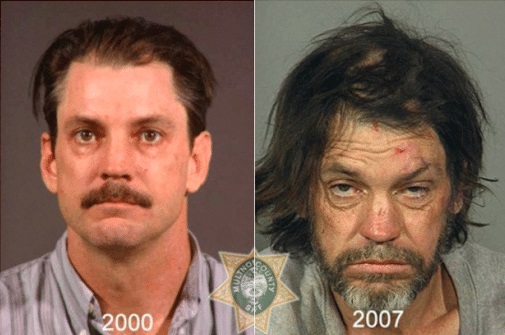
Before And After Heroin
Many people who experience heroin drug addiction will go to great lengths to hide their condition. Recognizing these warning signs and symptoms of heroin addiction can be the difference between continued addiction, recovery, and life and death.
The seven most common characteristics of someone with a Heroin addict personality are:
- Changes in physical health and appearance that are sudden or slow.
- Continual impulsivity.
- Constant tiredness.
- Dishonesty and manipulation patterns.
- Unreliable relationships.
- Chronic financial issues.
- Problems managing stress.
“Im quitting heroin.” The good news, there are a lot of ways how to help someone addicted to heroin drugs. Although caring for someone who is addicted to heroin is difficult, there are many things that families may do to assist. People can:
- Find out everything you can about how heroin works.
- Hold an intervention to discuss drug use.
- Choose an inpatient heroin treatment program.
- Obtain pre-authorization from insurance providers before receiving therapy.
- Speak with providers of heroin addiction therapy.
- Assist the patient to the medical facility.
- Attend therapeutic sessions as necessary.
- Find out when and where local support groups for heroin addiction meet.
- Watch out for indications of heroin relapse.
First-class Facilities & Amenities
World-class High-Quality Addiction & Mental Health Rehabilitation Treatment
Rehab Centers TourRenowned Addiction Centers. Serene Private Facilities. Inpatient rehab programs vary.
Addiction Helpline(844) 597-1011Proven recovery success experience, backed by a Team w/ History of:
15+
Years of Unified Experience
100s
5-Star Reviews Across Our Centers
10K
Recovery Success Stories Across Our Network
- Low Patient to Therapist Ratio
- Onsite Medical Detox Center
- Comprehensive Dual-Diagnosis Treatment
- Complimentary Family & Alumni Programs
- Coaching, Recovery & Personal Development Events
Heroin Addiction Treatment
People can successfully stop using heroin drugs with various heroin treatments, including detox for heroin, medications, and behavioral therapy. It’s critical to match the optimal treatment strategy with the unique requirements of each patient. Medicines are being created to aid with the withdrawal process. Lofexidine, a non-opioid medication intended to lessen opioid withdrawal symptoms, was approved by the FDA.
Heroin detox is a critical first step in treating heroin addiction, as it helps individuals safely and gradually withdraw from the drug while managing withdrawal symptoms. It is essential to undergo detoxification under medical supervision to ensure safety and provide the necessary support. Detox alone is insufficient for long-term recovery, and it should be followed by comprehensive addiction treatment to address the underlying factors contributing to addiction and develop strategies for sustained recovery.
Buprenorphine and methadone are two drugs that can be used to help people stop using heroin. They function by weakly attaching to the same opioid receptors as heroin in the brain, which lessens cravings and withdrawal symptoms. Naltrexone, which blocks opioid receptors and stops opioid medicines from acting, is another therapy option. An extended-release naltrexone formulation and a buprenorphine/naloxone combination are equally effective in treating addiction once treatment has begun, according to a NIDA study.
It was challenging to start treatment among active users since complete detoxification is required for treatment with naloxone, but after detoxification was finished, both drugs exhibited comparable efficacy. Cognitive-behavioral therapy and contingency management are two behavioral therapies for heroin addiction rehab. The patient’s expectations and actions around drug usage can be changed through cognitive-behavioral therapy, which helps the patient handle stress and triggers.
If you don’t know where to start or still seeking treatment options for heroin drug addiction, connect with We Level Up. Call us today for information resources. We can help you explore different options that suit your case suitably.
World-class, Accredited, 5-Star Reviewed, Effective Addiction & Mental Health Programs. Complete Behavioral Health Inpatient Rehab, Detox plus Co-occuring Disorders Therapy.
CALL(844) 597-1011End the Addiction Pain. End the Emotional Rollercoaster. Get Your Life Back. Start Drug, Alcohol & Dual Diagnosis Mental Health Treatment Now. Get Free No-obligation Guidance by Substance Abuse Specialists Who Understand Addiction & Mental Health Recovery & Know How to Help.
Top 10 Heroin Drugs FAQs
-
What plant does heroin come from?
Is opium heroin? Heroin is derived from the opium poppy plant, scientifically known as Papaver somniferum. The plant produces a milky sap known as opium, which contains various alkaloids, including morphine. Is heroin a plant? No. Heroin is synthesized from morphine, creating a highly potent and addictive drug.
-
What kind of drug is heroin?
Is heroin an opioid? Yes. Heroin is a highly potent and illegal opioid drug. It belongs to the class of drugs known as opioids, which act on the opioid receptors in the brain and central nervous system. Heroin is known for its powerful and addictive properties, leading to profound physical and psychological effects on the user.
-
How much heroin can make you overdose?
The amount of heroin required to cause an overdose varies widely based on factors such as purity, tolerance, and individual susceptibility. However, even a relatively small amount of heroin can be potentially lethal, especially when combined with other substances like alcohol or benzodiazepines. Due to the unpredictable nature of heroin potency and individual responses, any amount used carries a significant risk of overdose.
-
How do people use heroin?
Heroin can be used in several ways, including injecting, smoking, and snorting. Injecting, or “shooting heroin,” involves dissolving the heroin in water, and users shoot heroin by injecting it directly into the veins. How to smoke heroin? Heroin smoking involves heating the drug on foil or a similar surface and inhaling the vapors. In contrast, snorting heroin consists in crushing the substance into a powder and inhaling it through the nose. Methods and signs of heroin use carry risks and potential health consequences.
-
How addictive is heroin?
Heroin is highly addictive and considered one of the most addictive substances. Why is heroin so addictive? It binds to opioid receptors in the brain, resulting in intense euphoria and rapid development of tolerance and dependence. The addictive nature of heroin can lead to a vicious cycle of escalating use, withdrawal symptoms, and compulsive drug-seeking behavior.
-
Can you die from heroin withdrawal?
While heroin withdrawal is not typically life-threatening, the process can be physically and emotionally challenging. However, complications arising from severe withdrawal symptoms or underlying health conditions can pose risks. It is essential for individuals going through heroin withdrawal to seek medical assistance and support to ensure their safety and minimize potential complications.
-
Is heroin a hallucinogen?
No, heroin drug is not classified as a hallucinogen. It belongs to the class of drugs known as opioids, which are depressants that primarily act on the central nervous system. Heroin is known for its sedative and analgesic effects rather than inducing hallucinations.
-
How much is a kilo of heroin?
According to the (US DOJ) Department of Justice, prices range from $15,000 to $80,000 per kilogram of heroin. The report is based on heroin drug buy-bust operations. Producing, distributing, or purchasing illicit drugs, including heroin, is illegal and highly dangerous.
-
Can you eat heroin?
Heroin is typically not consumed by eating it. The most common routes of heroin administration are injecting, smoking, or snorting. Eating heroin would result in a much slower onset of effects and lower bioavailability than other methods.
-
Why do people use heroin?
People may use heroin for various reasons, although heroin use is hazardous, illegal, and associated with severe health risks. Some individuals may initially use heroin seeking intense euphoria, relaxation, or escape from emotional or physical pain. Others may start using heroin due to experimentation, peer pressure, or opioid misuse that began with prescription painkillers. Another notorious drug is called “crocodile heroin.” A synthetic drug from mixing codeine with hazardous chemicals.
Addiction Recovery Story of Alcoholism, Crack Cocaine Addiction, & Heroin Addiction To Sobriety & AA
Recovery from heroin drug addiction is possible with the proper support and treatment. It requires a combination of medical interventions, therapy, and a solid support system. Detoxification is often the first step, followed by ongoing treatment to address the underlying causes of addiction and develop healthier coping mechanisms.
While recovery is challenging, many individuals have successfully overcome heroin addiction and built fulfilling, drug-free lives.
If you or a loved one is struggling with heroin drug addiction or other substance use disorder(s), call a FREE consultation 24/7 at (561) 678-0917
Get FREE addiction treatment insurance check – https://welevelup.com/rehab-insurance/
Lorraine’s Addiction Recovery Testimonial Video Transcript.
“If I didn’t change, I would return to jail. I’m Lorraine, and I’ve been sober for six years. I’m a recovering alcoholic, heroin addict, and crack cocaine addict.
I was homeless for several years. I called the one person that never gave up on me, and that was my mom, and within an hour, she was at the motel where I was staying. And I said yes because I didn’t know what I was doing with my life, and it was the best phone call I had ever made.
After getting out of treatment, I did everything they told me to do. I got a sponsor. She’s still my sponsor. She’s taken me through the steps several times. I went back to school, and now I’m one semester away from finishing my Bachelor’s in social work. And then, I will start my Master’s in hopes to be a therapist so I can be there for others.
Being sober is the only reason that I can work towards that.”
Experience Transformative Recovery at the We Level Up Treatment Center.
See our authentic success stories. Get inspired. Get the help you deserve.
Experience Transformative Recovery at We Level Up Treatment Centers.
See our authentic success stories. Get inspired. Get the help you deserve.
Start a New Life
Begin with a free call to an addiction & behavioral health treatment advisor. Learn more about our dual-diagnosis programs. The We Level Up Treatment Center Network delivers recovery programs that vary by each treatment facility. Call to learn more.
- Personalized Care
- Caring Accountable Staff
- World-class Amenities
- Licensed & Accredited
- Renowned w/ 100s 5-Star Reviews
We’ll Call You
Search We Level Up Heroin Drug Detox, Mental Health Topics & Resources
Sources
[1] Chasing the Black Dragon – Heroin Drug – Office of Justice Programs (OJP)
[2] Passaro DJ, Werner SB, McGee J, Mac Kenzie WR, Vugia DJ. Wound botulism associated with black tar heroin among injecting drug users. JAMA. 1998 Mar 18;279(11):859-63. DOI: 10.1001/jama.279.11.859. PMID: 9516001.
[3] Wound Botulism Outbreak Among Persons Who Use Black Tar Heroin — San Diego County, California, 2017–2018 – Centers for Disease Control and Prevention (CDC)
[4] Ciccarone D. Heroin in brown, black and white: structural factors and medical consequences in the US heroin market. Int J Drug Policy. 2009 May;20(3):277-82. DOI: 10.1016/j.drugpo.2008.08.003. Epub 2008 Oct 21. PMID: 18945606; PMCID: PMC2704563.
[5] Mars SG, Bourgois P, Karandinos G, Montero F, Ciccarone D. The Textures of Heroin: User Perspectives on “Black Tar” and Powder Heroin in Two U.S. Cities. J Psychoactive Drugs. 2016 Sep-Oct;48(4):270-8. DOI 10.1080/02791072.2016.1207826. Epub 2016 Jul 20. PMID: 27440088; PMCID: PMC5027195.
[6] Learn More About “What Does Heroin Look Like?” – National Institute on Drug Abuse (NIDA) Available from: https://nida.nih.gov/research-topics/heroin
[7] Heroin Fast Facts – Department of Justice (USDOJ) Available from: https://www.justice.gov/archive/ndic/pubs3/3843/index.htm
[8] MedlinePlus Heroin Drug Information: https://medlineplus.gov/heroin.html
[9] Davis CS, Carr DH, Samuels EA. Paraphernalia Laws, Criminalizing Possession and Distribution of Items Used to Consume Illicit Drugs and Injection-Related Harm. Am J Public Health. 2019 Nov;109(11):1564-1567. DOI: 10.2105/AJPH.2019.305268. Epub 2019 Sep 19. PMID: 31536408; PMCID: PMC6775926.
[10] Oelhaf RC, Azadfard M. Heroin Toxicity. [Updated 2023 May 8]. In: StatPearls [Internet]. Treasure Island (FL): StatPearls Publishing; 2023 Jan-. Available from: https://www.ncbi.nlm.nih.gov/books/NBK430736/
